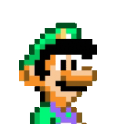- 0
Batch Script to delete, choose random, rename and move. PLEASE HELP!
-
Recently Browsing 0 members
- No registered users viewing this page.
-
Posts
-

By Usama Jawad96 · Posted
Debian switches to 64-bit time completely to avoid Y2K38 disaster by Usama Jawad Some of you may remember the Y2K problem, where the world expected airplanes to fall from the sky as soon as we reached the year 2000, primarily because many software applications at that time typically just used the final two digits of each year to store calendar year data, which meant that the year 2000 was indistinguishable from the year 1900. Fortunately, we were able to avoid the 2K problem, thanks to the tireless efforts of many software vendors and engineers. Now, we are a few years away from a similar issue, and it looks like the Linux distro Debian wants to solve that problem right now in its own operating system. Basically, older 32-bit architectures will face the Y2K38 problem in the year 2038. This is because the signed representation of Unix datetime values will overflow the 32-bit space, which would cause bugs in associated software. Debian is a pretty old distro with its first release dating back to 1993, so the maintainers say that a lot of sensitive computing is still happening on 32-bit architecture. Although there are still roughly 13 years to go before we reach 2038, developers want to proactively tackle the problem rather than having to scramble at the last minute like with Y2K, according to The Register. Another name for Y2K38 is the Unix Epochalypse, since it impacts systems that store datetime values in the Unix format within a signed 32-bit space. On January 19, 2038, 03:14:07 UTC, this space will overflow. As such, Debian maintainers will use 64-bit time_t formats even on 32-bit architectures starting with the release of Debian 13 "Trixie". This is not a small change, as maintainers found the use of the time_t variable in random places across 6,429 packages. The maintainers went on to say that: This may be a breaking change for some applications, so it is important to test your program's response to the time_t variable switch by leveraging the Debian wiki. Interestingly, Y2K38 may also impact certain older Windows programs and out-of-support Windows operating systems. -

By +sphbecker · Posted
I hope they programed its eyes to turn red when it becomes evil, that is an important feature for any AI representation. -

By TarasBuria · Posted
Microsoft gives Copilot visual appearance with real-time expressions and emotions by Taras Buria Several months ago, during its 50th anniversary event, Microsoft teased a visual upgrade for Copilot (then called "Copilot Avatar") that would give the chatbot a visual character with expressions, reactions, and emotions. Now, users in the US, UK, and Canada can try Copilot Appearance, "a new, visual way to chat." Conversational mode has been available in Copilot for a while, but it lacked any visual cues or non-verbal communications. All users see on their screens is some abstract animation. With Copilot Appearance, Microsoft is improving voice conversations with real-time visual expressions. Sadly, Copilot Appearance is not a Clippy 2.0. In its current form, it is an abstract blob with a face that can morph into different shapes, express emotions, nod in agreement, etc. The concept is similar to what xAI offers with Grok AI companions that cost $300 per month, but Microsoft's approach is much more toned down (and you cannot undress it). On the official Copilot Labs website, Microsoft describes Copilot Appearance as "an experiment to incorporate a more visual, engaging experience into Copilot." Copilot Appearance is rolling out to a limited set of users in just three countries as Microsoft takes a cautious approach to a more personified AI. If you have a lucky ticket, you can try Copilot Appearance by launching Voice Mode (click the microphone button in the composer) and toggling the feature in Voice Mode settings. Microsoft says that the initial release is experimental, and it is working on refining the experience. -

By TRS-80 · Posted
A number of years ago I purchased a "Renewed" HP laptop. It worked great until it didn't work at all. Both of my W11 devices are HP AIO desktops. Have had them since before W11. They upgraded fine and have worked great ever since. My printer is also an HP inkjet. I have had it several years and have never paid for ink. -

By TRS-80 · Posted
If you use AdGuard on your PC, you can find the new "Disable Windows Recall" feature in Settings > Tracking Protection. The "Disable Windows Recall" feature in Adguard 7.21 in turned on by default. No need to do anything if you want to use the feature.
-
-
Recent Achievements
-
 CyberCeps666 earned a badge
CyberCeps666 earned a badge
Week One Done
-
d4l3d earned a badge
Very Popular
-
Stephen Leibowitz earned a badge
Dedicated
-
Snake Doc earned a badge
Dedicated
-
Philsl earned a badge
One Month Later
-
-
Popular Contributors
-
Tell a friend









Question
junjie1800
Hi I really need help with creating a batch file that does the following. pleas help!
1) Delete "X.jpg" from directory A,
2) Choose random .jpg file in directory B and rename it to "X.jpg",
3) Move "X.jpg" from Directory b to directory A.
Please help
Link to comment
https://www.neowin.net/forum/topic/771924-batch-script-to-delete-choose-random-rename-and-move-please-help/Share on other sites
5 answers to this question
Recommended Posts